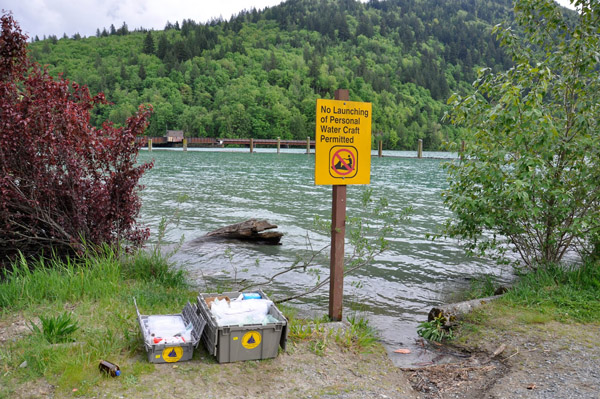The thing with feathers
There was much rejoicing when we learned that our gear had finally arrived at UFV this morning. Not a moment too soon, as we were rearing to hit the road and start some serious sampling. After an elaborate game of 3-D tetris to arrange all our gear and personal effects in the minivan, we were off!
Stop #1 was Pitt Lake. Shrouded in fog on a regular basis due to the steep valleys surrounding the lake, Pitt always has a sort of mystical charm to it. Which is important, since we also always seem to get rained on there. But we used the conditions to iron out the kinks in our sampling routine under real circumstances. We also caught sight of a few great blue herons, which was a treat.
Leaving Pitt, the skies cleared up and we were feeling optimistic for our second station, Harrison Lake. Pitt and Harrison are two long, deep glacial valleys that contribute the majority of the flow to the Fraser in the floodplain, delivering heavy rainfall runoff from moist Pacific air and considerable snowpack from the Coast Range mountains. Just looking around at these two sites we could see how much snow is still locked up in the mountains, suggesting that the rising water level of these tributaries and the Fraser mainstem will continue for a bit longer. We were surprised to see how much higher the water level at our Harrison sampling site was today than we have ever seen it (see photo). The boat ramp at Kilby Park is completely submerged, as is the entire shore of the beach and many trees.

Harrison Lake sampling site
Driving to our final stop for the evening offered even more stunning vistas of the high flow condition of the Fraser River. The river is visibly pushing up against its banks and many of the mid-channel islands are partially submerged. We drove into the town of Hope to discover that our previous sampling site was flooded to the point of being inaccessible. But we quickly found a friendly proprietor at the nearby RV campground, who welcomed us to sample where we could find access. We accomplished the first half of our Hope station, filling large carboys to be filtered later. While the water poured into our carboys, we watched in awe as the mighty Fraser rushed by in front of us in the hazy evening light. Pleasant thoughts to keep our spirits up for the long filtration session that followed.
I am currently accepting wagers for exactly how high the Fraser’s water level (at Hope) will get by the end of the freshet. Today’s maximum was 8.28 meters. If you wish to make an educated guess, visit Environment Canada Water Office. Gentle readers, place your bets!
